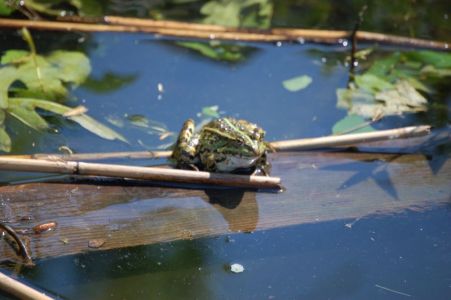Fauna of the Lake Pamvotis
The significant importance of the basin for the protection of biodiversity, is concentrated in the conservation of more than 170 species of birds, such as egrets, ducks, harriers, raptors etc., thirty-four of which are protected by the European & Greek Law (Appendix II, 79/409). The existence and the reproduction of the ferruginous duck (Aythya nyroca) in the lake, is of a particular importance at a European level, because is threatened with extinction worldwide.
Moreover, the conservation of ten more species of birds, including the pygmy cormorant (Phalacrocorax pygmeus) a small cormorant species, need special consideration and attention. An appropriate management of the lake’s wet meadows is needed in order to restore and preserve them, as well as the management and conservation of the reeds and of the riparian vegetation, aiming to the strengthening of the conservation of the lake’s avifauna.
Pamvotis Lake was formerly a great fishing centre in Western Greece. The main commercial species are invasive, which were introduced in various ways, such as tench or “glini” (1929), carp or “Kiprinos” (1929), ylikiensis roach or “Dromitsa” (1945). Native species are Albanian barbell or “Maritsi”, Epirus minnow or “tsima” and eels.
Three species can be found today, which are included in the EU Directive 92/43/ E.E.C. (Appendix II). These are: "Maritsi” (Barbus albanicus), «Dromitsa» (Rutilus ylikiensis) and "Tsima» (Pelasgus epiroticus). Although there are no data, regarding the population sizes, an immense decline of major endemic fish species Pelasgus epiroticus (Tsima) is observed in recent years. Possible causes of this decline are the poor water quality, the degradation of the breeding areas and the competition with other species.
The lake is home of 9 out of the 17 amphibian species living in Greece. Two of them are strictly protected by the European and Greek legislation. These are the great crested newts (Triturus cristatus) and the yellow-bellied toad (Bombina variegata).
The existence of a rich and healthy ecosystem has resulted in the existence of 24 species of reptiles, of which 5 are strictly protected. There are 3 species of turtles, the European pond turtle (Emys orbicularis), the Hermann's tortoise (Testudo hermanni), the marginated tortoise (Testudo marginata) and two species of snakes, the Four-lined snake or “lafitis” (Elaphe quatuorlineata) and the European ratsnake or leopard snake or “Spitofido” (Zamenis situla).
In addition, in the lake’s ecosystem 20 species of mammals have been recorded, of which 3 are strictly protected (Appendix II, Directive 92/43/EEC), including a species of bat (Phinolophus ferumequinum) and the otter (Lutra lutra), the presence of which is still argued.
Finally, the knowledge regarding the invertebrate richness of the lake is still incomplete. Twenty-five species of Orthoptera, Lepidoptera and Coleoptera have been recorded. Some of them are endemic in Western Greece and are strictly protected (Appendix II, 92/43). It is the butterfly (Euphydras aurinia) and two species of Orthoptera, the Dolichopoda greaca and Chorthippus lacustris, which show an intense population decline. The restoration of wet meadows, which are located around the lake and periodically are flooded, is a requirement for the protection of the invertebrate fauna.
The threats that the fauna species are facing in the lake’s ecosystem are summarised in the following human intervention areas: (a) reduction of the lake’s area due to concurrent infillings and destruction of the littoral habitats, (b) disruption of the water equilibrium of the springs vs cesspool and poor water management; (c) poor water quality, eutrophication and pollution from agricultural, urban and livestock effluents (d) direct intervention in aquatic fauna.












